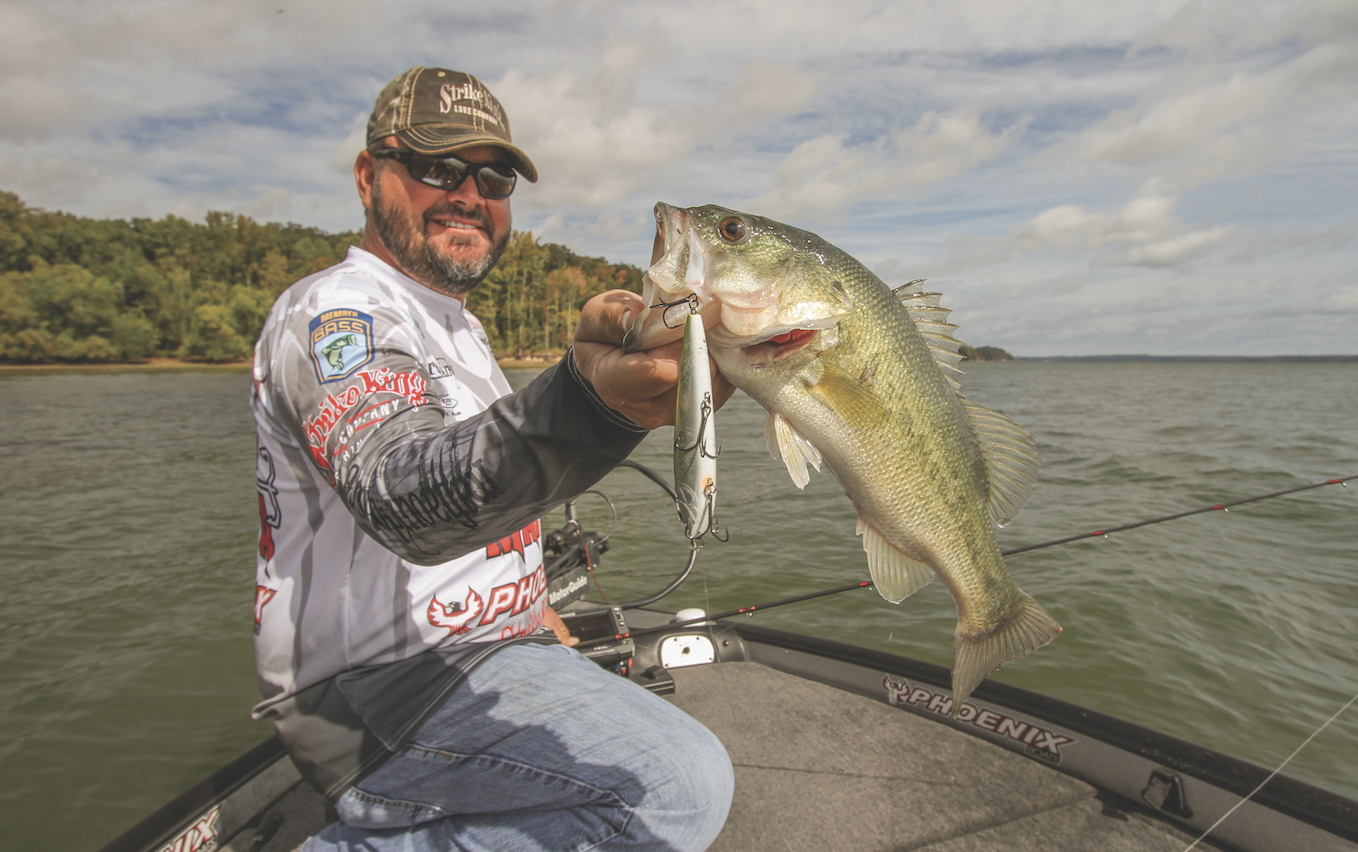
It's the season figure slimming the nation’s reservoirs experience each year: the fall drawdown — a period when lake managers drop the water to winter pool in preparation for the following spring’s influx of rain. This is a time that defines give-and-take. But what anglers lose in terms of visible shallow-water targets is often favorably offset by new opportunities.
Suffice it to say that any laydowns, logs, etc., remaining at least partially submerged will see their popularity skyrocket. However, the drawdown finds a lot of fish on the move, so don’t expect a lot of target-specific activity. “The drawdown moves fish,” says Bassmaster Elite Series pro Tim Horton. “Fish that were along the banks all of the sudden no longer have that security, so they’re going to start swimming and looking for it.”
Describing the opportunity level, Horton says this: “It’s almost like when fish first get out on the ledges in the summertime; that’s when they’re the most catchable because they’re feeding. “The drawdown will move schools of fish to new locations, and when they get set up on their new locations, they’re really aggressive because they haven’t had a lot of fishing pressure yet.”
Elite pro Greg Hackney says: “The drawdown condenses all that life that’s been living up in that flooded cover all summer long and triggers the fish to feed. The other thing is the shortening of the daylight periods. Even without a temperature change, fish know that when days start to get shorter again, we’re coming into that fall period, so that also triggers the fish to feed. You add to that the cooler water temperatures and it’s the perfect storm.”





